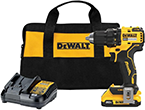Installing Radiant Floor Heating
Written by Lee Wyatt (last updated August 13, 2021)
Don't you just hate to get up in the morning, or even get out of the shower, and find yourself dealing with a cold floor? What an absolutely horrid feeling to deal with. Well there is a solution for you, and that would be to install some radiant floor heating. Installing radiant floor heating while a time consuming project, is one that even a novice can accomplish. The main rule is to take your time, and be prepared to work hard.
Before you begin installing radiant floor heating, be aware that there are two methods that you can choose from. One is called the hydronic system, while the other uses an electrical mat. Of the two, the simplest to install is going to be the electrical mat system, and the one that will be discussed here. When installing either kind of radiant floor heating, make sure that you check with an electrician to make sure that your home's electrical grid can handle the new circuit that may be needed.
Keep one thing in mind as you begin installing radiant floor heating: not all kits will be installed the same way. The guidelines listed here are generalities only. Follow the directions of the manufacturer as closely as possible to ensure optimum performance.
Materials:
- Electric mat radiant heat kit
- Electrician's tape
- Utility knife
- Scissors
- Staple gun
- Staples
- Wire crimper
- Wire stripper
- Tinned copper sleeve
- Insulation
- Fire extinguisher (just in case)
- A friend to help
Procedure:
- Remove insulation. Use a utility knife and remove the insulation underneath your flooring. If you are installing radiant floor heating on a second story home this won't be a problem, though you will have to remove the ceiling from the floor underneath and then replace it when you are finished.
- Turn off electricity. Turn off the electricity to the area that you are working on, you do not want to be accidentally electrocuted while working on this project. Turn the power off at your breaker box and be sure to leave a note saying that it is to remain off.
- Unroll mat. Unroll the mat, and then cut it to length using regular scissors or a utility knife. Use a wire stripper to strip the wiring insulation off of one end of each of the two wires that run along the mat. The mat needs to be turned so that these stripped ends will face the power source. Have a friend hold the mat in place while you staple it to the floor joists on either side of the matting. Leave the final two feet of matting closest to the power source unattached for now so that you can work easier.
- Install the wiring. Stake the wire stripper and expose the wires from the power source. There should be a black one and a white one. Take the black wire and attach it to one of the exposed wires from the mat. Do this by placing a tinned copper sleeve and placing it over the end of the exposed wire at the end of the mat. Twist the exposed wiring from both wires together, and then slide the copper sleeve over the now joined wires. Use the crimper to crush the sleeve tightly over the wires. Wrap electricians tape over the copper sleeve, and ensure that there is no exposed wiring left. Repeat the process for the white wire as well.
- Test electricity. Turn the electricity back on to test the electrical work. Before you do this though have a friend with a fire extinguisher nearby just in case. Turn the heat on, and see how it works. If you see any sparks turn the power off immediately, and double check to make sure that there is no exposed wiring.
- Replace insulation. Replace all the insulation that you removed once all the mats are in place. Be sure that you leave enough distance between the insulation and electrical mats to reduce the risk of a fire. The manufacturer's directions should have the recommended distance listed.
Author Bio
Lee Wyatt
Contributor of numerous Tips.Net articles, Lee Wyatt is quickly becoming a regular "Jack of all trades." He is currently an independent contractor specializing in writing and editing. Contact him today for all of your writing and editing needs! Click here to contact. Learn more about Lee...
Closet Organization Systems
Closet organization systems don't necessarily need to be some formal piece of equipment—though those can indeed ...
Discover More
Repairing a Leaking Tank
Over time just about everything will leak, and your toilet is no different. Perhaps one of the more annoying locations ...
Discover More
Using Electrical Testers
Electrical testers are a great tool to have when you do any type of electrical work. Unfortunately, if you don't know how ...
Discover More

Comments